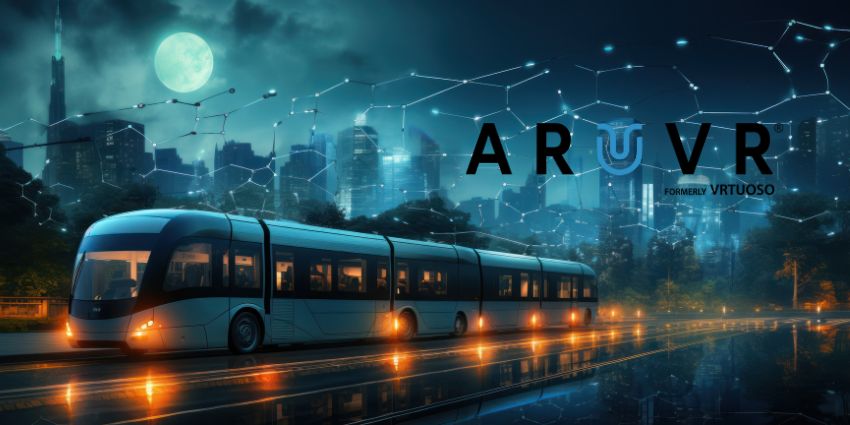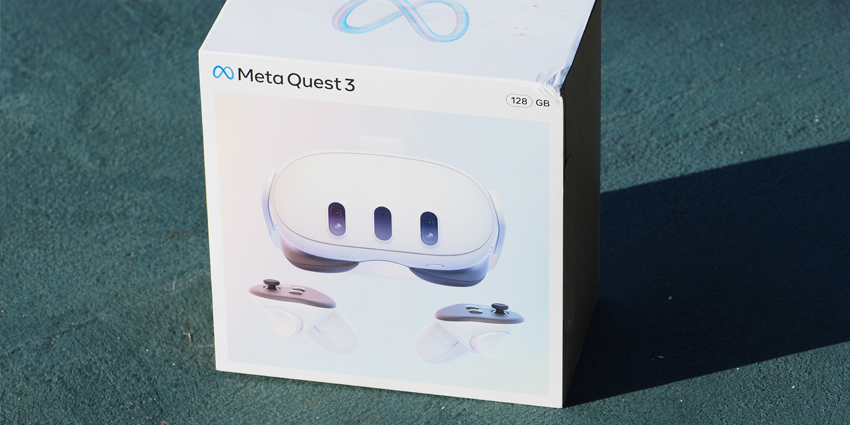Last week, NVIDIA used its yearly GTC event to showcase many innovative workplace solutions. Notably, via its XR segment, the firm highlighted how spatial data cloud streaming will allow various industrial sectors, such as automated warehouse management, to grow and optimize operations thanks to emerging workplace technology.
Moreover, the rise of robust RT3D streaming solutions from NVIDIA partners is helping enterprise clients circumnavigate hurdles which slow workplace XR adoption and diminish benefits.
One leading XR streaming solution provider is Innoactive, which leverages RT3D engines from Unreal, Unity, and NVIDIA to promote the adoption of workplace XR services – allowing clients to distribute XR applications directly to a range of end-devices with the compute processing happening remotely on the cloud.
Daniel Seidl, the Founder and CEO of Innoactive, took the time to speak exclusively to XR Today at NVIDIA GTC’s XR Demo floor to discuss recent innovations in XR cloud streaming, NVIDIA’s move towards the segment, and its benefits to enterprise clients.
Seidl noted:
Back when we started in 2014, the enterprise discovered gaming engines as a tool to speed up access to custom-developed VR simulations. Enterprise customers would develop VR training with Unity or design an application with Unreal; we’re able to ship these XR services fast for our users – but they are missing a deployment platform, and that’s how we got incorporated. Because Volkswagen Group approached us and said: “Hey, we have dozens of applications, but we need to deploy them to all these factories to transform our organizations.” We developed our product, and in the next step, we added cloud streaming because back then, it was just HTC VIVE and clients used to deploy VR training to a PC. But now it’s about how we can enable 10s of 1000s of people to access VR training or simulations on stand-alone VR headsets without having to deploy on a PC first.
With such a broad range of RT3D engines available for enterprise, Seidl believes customers will mix and match chosen services based on what fits a use case best. He also noted that Unreal and Unity will “try to catch up because the industrial segments are very important for them.”
NVIDIA OpenUSD – the file format for Omniverse – is a “game changer,” said Seidl, who also noted how he hopes OpenUSD gets adopted sooner rather than later as many past problems will stay in the past.
Seidl added:
We have supported Unity and Unreal for a while. But with Omniverse, its a special thing because this is not only a rendering engine. It’s also a collaboration tool that allows for the bi-directional synchronization of data. Companies are not only adopting Omniverse for rendering but also for establishing data exhange between different users. This is something that I wish our customers had five years ago because it makes it easy to establish workflows that eliminate problems with data, conversions, and losses along the journey. Now, Omniverse can also be wired up with Unity or Unreal. So you can do a design review while having a product configurator in Unreal that is synced up in real-time.
Breaking Down Workplace Barriers
XR/spatial data streaming platforms are crucial for workplace adoption of XR. The file types required for enterprise adoption of 3D collaboration tools are extensive and resource-heavy. In comparison, consumer XR use cases require far smaller file types as graphical fidelity expectations are far lower.
However, a higher graphical benchmark is required in industrial or enterprise workflows where every detail matters and minor errors can cost millions. Therefore, cloud streaming is increasingly important as hardware requirements grow exponentially with extensive simulations and 3D files.
Seidl explains:
Our customers are large enterprises, and when they want to reach their users with XR, the problem is always that they don’t have the hardware, or it’s too complicated for them to get started. If we can break down these barriers and enable access to VR solutions via streaming, all a customer needs is a headset or office PC, and then they can stream it, and the use cases will get much better.
Adopting XR solutions, no matter the form or use case hinges on accessibility and ease of use. In business, time is money – as some would say – and an end user would ideally want to avoid complicated onboarding processes and IT department requirements.
With workplace XR solutions in their infancy, a streamlined onboarding and adoption process is necessary to help those unfamiliar. Increasingly – and as seen with the firms present at GTC – the solutions to streamline immersive service adoption are coming left and right from start-ups to established industry players.
Innoactive is already experienced in improving XR workplace services and workflows. In conclusion, Seidl said:
It’s the last mile to the user, which is the problem. We make the access as simple as starting a Zoom meeting. So, for example, we now have an Omniverse extension. So, if you have an Omniverse simulation, as a professional user, you can create a sharing link and invite other people who don’t have a workstation. Then, these users can click the link, and the stream will start directly in a headset. There is no barrier to entry.
NVIDIA has optimized the Omniverse platform for its industry partners by offering cloud-based APIs that enable clients to use digital twin workflows. Omniverse is the operating system that allows clients to build and operate physically realistic digital twins, which can be used for design processes, automation workflows, and even predictive weather solutions.
In addition, NVIDIA’s Omniverse is now available on Apple’s Vision Pro. NVIDIA has also introduced Omniverse Cloud APIs, which allow users of Apple Vision Pro to customize and distribute high-quality OpenUSD file types on mobile devices without compromising content or performance quality, thanks to cloud-compensated computing processes.







